Nonfiction Wednesday
Nonfiction Picture Book Wednesday is hosted by Kid Lit Frenzy and was started to help promote the reading of nonfiction texts. Most Wednesdays, we will be participating and will review a nonfiction text (though it may not always be a picture book).
Be sure to visit Kid Lit Frenzy and see what other nonfiction books are shared this week!
March Trilogy
Author: John Lewis and Andrew Aydin
Illustrator: Nate Powell
Published 2013, 2015, & 2016 by Top Shelf Productions
Summary: Congressman John Lewis (GA-5) is an American icon, one of the key figures of the civil rights movement. His commitment to justice and nonviolence has taken him from an Alabama sharecropper’s farm to the halls of Congress, from a segregated schoolroom to the 1963 March on Washington, and from receiving beatings from state troopers to receiving the Medal of Freedom from the first African-American president.
Now, to share his remarkable story with new generations, Lewis presents March, a graphic novel trilogy, in collaboration with co-writer Andrew Aydin and New York Times best-selling artist Nate Powell (winner of the Eisner Award and LA Times Book Prize finalist for Swallow Me Whole).
March is a vivid first-hand account of John Lewis’ lifelong struggle for civil and human rights, meditating in the modern age on the distance traveled since the days of Jim Crow and segregation. Rooted in Lewis’ personal story, it also reflects on the highs and lows of the broader civil rights movement.
Book One: Begins with John Lewis’ youth in rural Alabama, his life-changing meeting with Martin Luther King, Jr., the birth of the Nashville Student Movement, and their battle to tear down segregation through nonviolent lunch counter sit-ins, building to a stunning climax on the steps of City Hall.
Book Two: After the success of the Nashville sit-in campaign, John Lewis is more committed than ever to changing the world through nonviolence – but as he and his fellow Freedom Riders board a bus into the vicious heart of the deep south, they will be tested like never before. Faced with beatings, police brutality, imprisonment, arson, and even murder, the young activists of the movement struggle with internal conflicts as well. But their courage will attract the notice of powerful allies, from Martin Luther King, Jr. to Attorney General Robert F. Kennedy… and once Lewis is elected chairman of the Student Nonviolent Coordinating Committee, this 23-year-old will be thrust into the national spotlight, becoming one of the “Big Six” leaders of the civil rights movement and a central figure in the landmark 1963 March on Washington for Jobs and Freedom.
Book Three: Fall 1963, the Civil Rights Movement is an undeniable keystone of the national conversation, and as chair of the Student Nonviolent Coordinating Committee, John Lewis is right in the thick of it. With the stakes continuing to rise, white supremacists intensify their opposition through government obstruction and civilian terrorist attacks, a supportive president is assassinated, and African-Americans across the South are still blatantly prohibited from voting. To carry out their nonviolent revolution, Lewis and an army of young activists launch a series of innovative projects, including the Freedom Vote, Mississippi Freedom Summer, and a pitched battle for the soul of the Democratic Party waged live on national television. But strategic disputes are deepening within the movement, even as 25-year-old John Lewis heads to Alabama to risk everything in a historic showdown that will shock the world.
Many years ago, John Lewis and other student activists drew inspiration from the 1950s comic book “Martin Luther King and the Montgomery Story.” Now, his own comics bring those days to life for a new audience, testifying to a movement whose echoes will be heard for generations.
Review: No matter what I say in this review, I am not going to give this trilogy justice. I mean, Book Three won the National Book Award, Sibert Medal, Printz Award, Coretta Scott King Award, YALSA Excellence in Nonfiction, and the Walter Dean Myers Award. And it had SIX starred reviews, Book Two had FOUR starred reviews, and Book One had FIVE starred reviews. That is FIFTEEN between the three! And they all deserve whatever praise or recognition they have received.
John Lewis’s story included many aspects of the Civil Rights movement I did know about; however, it gives insight into these events that no one else could give us as Lewis is the last of the March on Washington speakers to be with us. It also addresses aspects of the movement that are not taught in history books because it is ugly. Our history is ugly, but that is exactly why it needs to be talked about. There were times when reading where I had to put the book down (especially in Book Three) because this truth was harder to read than just any fiction I’ve encountered. These were my tweets as I was reading (read bottom to top):
But it is because of the shocking nature of our history that we must speak and read and learn about it. We are supposed to keep moving forward, and the only way to make sure we know which way that is, is to learn about what was in the past. John Lewis, with the help of his co-writer Andrew Aydin and the illustrator Nate Powell, have given us a gift with these books. A gift of a look into the past through the eyes of an insider.
I’d also like to share how amazing it was to see John Lewis at ALA Annual in Chicago! I had the honor of hearing him speak twice: once at the Coretta Scott King Award breakfast and once in the Library of Congress pavilion. I also got to shake his hand (though the picture didn’t come out–boo!), thank him, and get my book signed by him and Nate Powell. I am still in awe of the experience!
Teachers’ Tools for Navigation: PLEASE put these in classrooms! U.S. History teachers, use these as your resource for teaching about Civil Rights. ELA teachers, use these as a nonfiction text in any unit. Anyone with a library for young adults, please put them in your collection. Everyone, read these with a young adult or get them to a young adult. Learning about John Lewis’s truth is how we keep history from repeating itself.
Discussion Questions:
March Book Three Example Lesson Plan
Flagged Passages:
Here are three passages I took photos of because it shocked me how relevant they are to our society today. They may not be the best representation of John Lewis’s narrative; however, they do show the beautiful format and artwork as well as touch on some of the events in Book Three.
Read This If You Love: Just read these. I promise.
Recommended For:
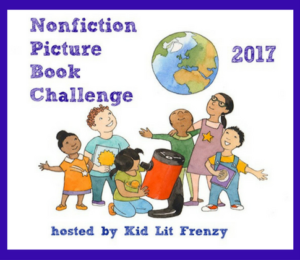
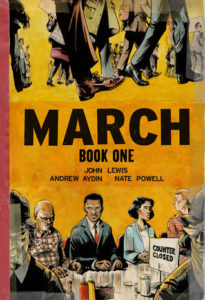
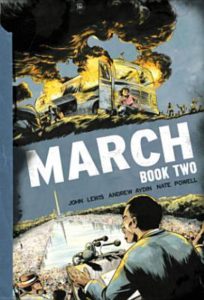
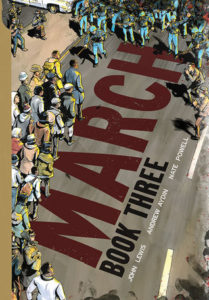
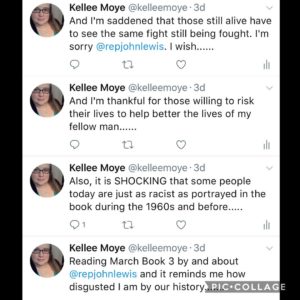
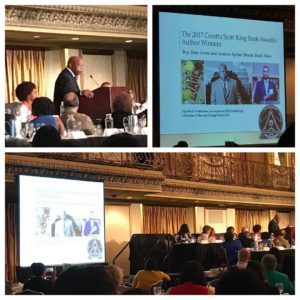
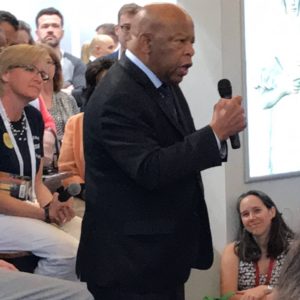
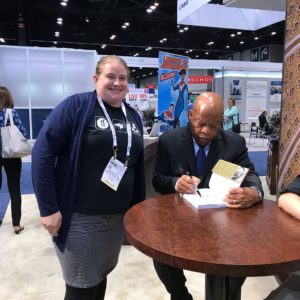
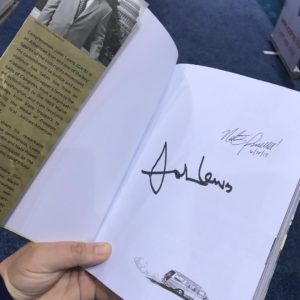
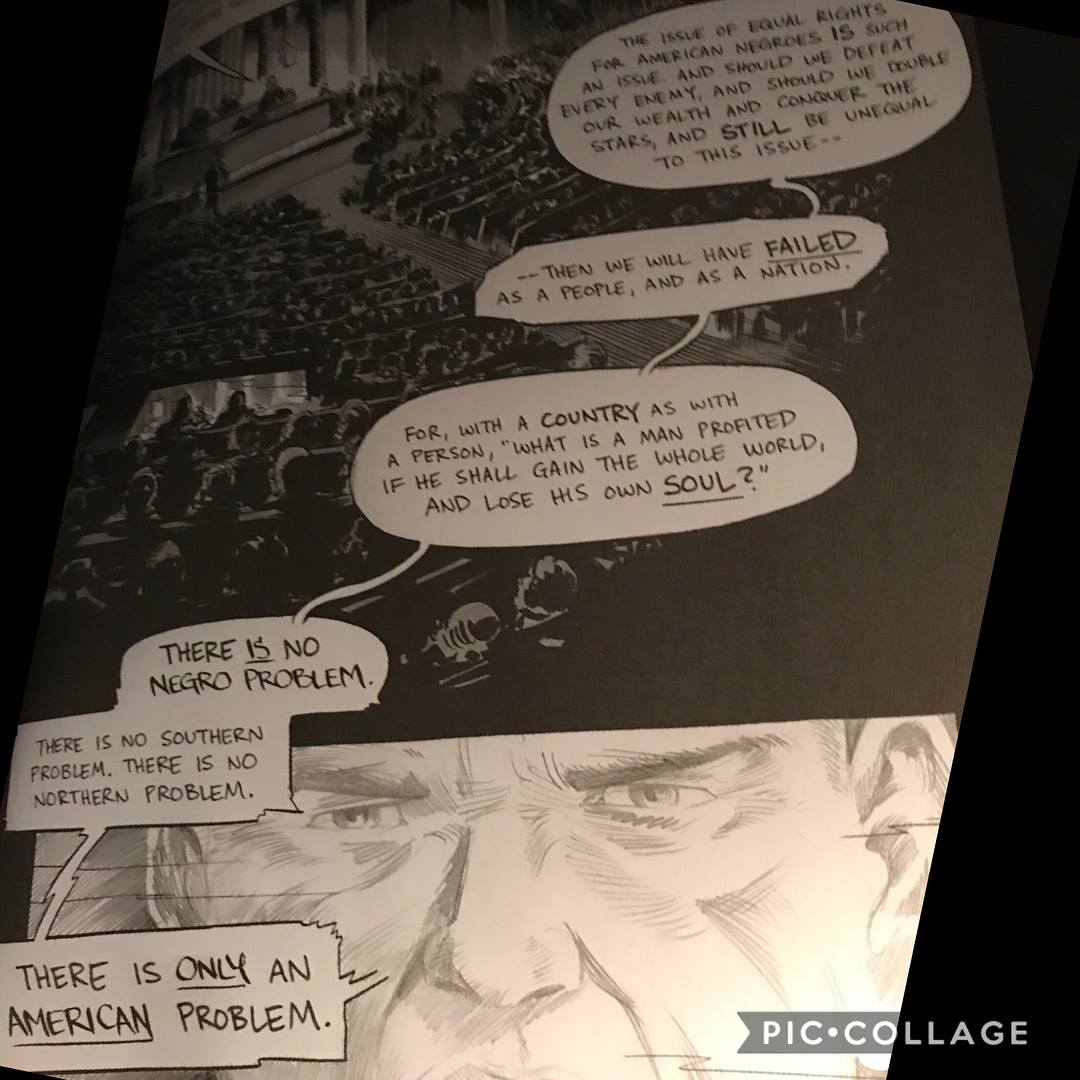
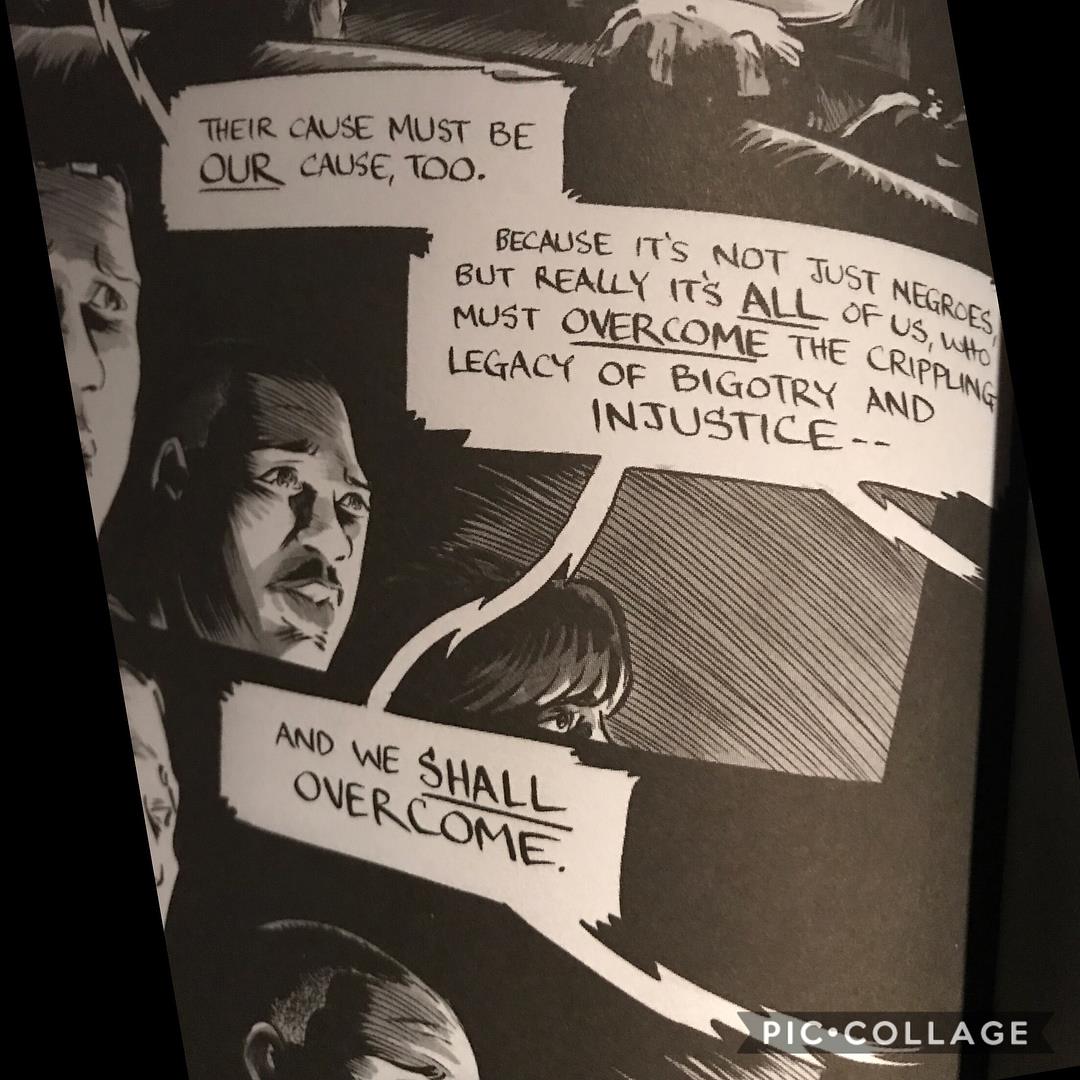
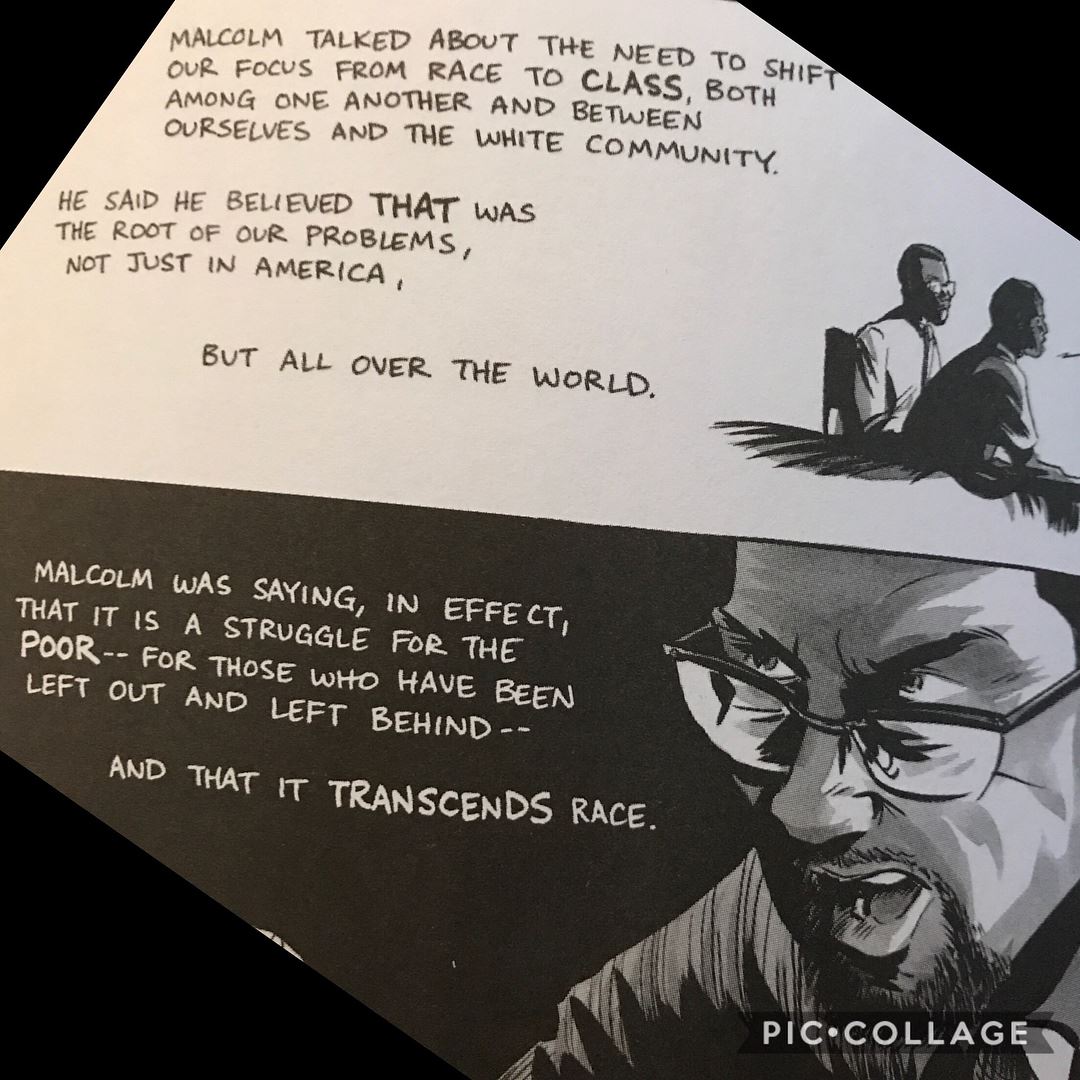




Even reading reviews of this trilogy or hearing people talk about is is so inspiring. It does change readers!
My daughter, lucky girl, lives in John Lewis’ congressional district. He continues to stand for justice.
I know how much these books and this post means to you. Well stated.